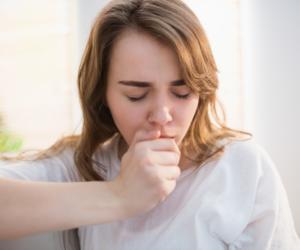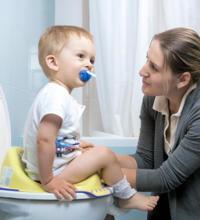What Is Mycoplasma Pneumonia?

History
In 1944, Mycoplasma pneumonia was discovered in one patient that had “atypical” pneumonia. At first it was thought to be a fungus or a virus hence the name Mycoplasma, a Greek word meaning fungus was named. Eventually, it was learnt that it was a bacterium that had a distinct characteristic, i.e. it did not have a firm cell wall. This characteristic affected antibiotics that should work tremendously well against the bacteria. Bacterium is one of the smallest organisms that can live and reproduce on its own, unlike viruses that need a cell to reproduce and live in.
Overview
Mycoplasma pneumonia is caused by a bacteria which affects the lungs. Another name for this kind of pneumonia is atypical pneumonia. In atypical pneumonia, the symptoms are not the same as those of pneumonia because of other common bacteria. In children, this bacteria causes tracheobronchitis also known as a chest cold. Sometimes, Mycoplasma pneumonia infection can develop into a serious lung infection which may require medication.
Walking pneumonia is another name for Mycoplasma pneumonia. Though it is not a medical term, it is being used to describe mild pneumonia. Pneumonia can be caused by fungi, bacteria, viruses, chemicals, inhaled substances and other infectious agents. Individuals with walking pneumonia can carry out their normal duties.
Causes of Mycoplasma pneumonia
This results in a lung infection causing an ailment in the lungs. A bacterium known as Mycoplasma pneumonia causes the disease. There are more than 200 different species known to man. Not all patients with respiratory infections develop pneumonia. Most often, the bacterium will attach itself to the lungs after which it will multiply until it develops into a full infection.
Transmission
Mycoplasma pneumonia is contagious. Mycoplasma pneumonia bacteria are found in the nose, throat, windpipe and lungs. The mode of spreading is through contact with droplets from the throat or nose of someone who is infected. This happens when the affected individual sneezes or coughs and someone else breaths in the bacteria. Most people don’t get the infection in short term contact but are most likely to contract when it is transferred between family members. The period of incubation is between 1–4 weeks.
Outbreaks are experienced mostly in crowded areas. Outbreaks in schools have been transmitted to the community through family members whose children are infected.
Who is at risk?
Adults are less likely to be susceptible to Mycoplasma pneumonia because their immune system can fight it off before it develops into an infection.
The group that is most at risk are:
- Adults above the age of 65
- People with ailments that compromise their immune systems i.e. HIV
- Lung ailments
- Sickle cell
- Young children below 5 years of age
What are the symptoms?
Symptoms usually appear for 1-3 weeks and are usually mild.
Mycoplasma pneumonia and common upper respiratory tract infection share the same symptoms.
Some shared symptoms of Mycoplasma pneumonia include:
- Sore throat
- Chills
- Persistent fever
- Dry cough
- Malaise
Other symptoms that are less common:
- Ear pain
- Eye pain
- Neck lump
- Rapid breathing
- Muscles pain
- Skin rash or lesion
In rare instances, the infection can sometimes damage the heart or nervous system. These disorders include the following:
- Arthritis - this is a disorder that causes joints to swell.
- Pericarditis - this causes soreness in the pericardium.
- Guillain-Barré syndrome - a neurological condition that causes paralysis and death.
- Encephalitis - causes the brain to swell.
How is it diagnosed?
It is difficult to diagnose Mycoplasma Pneumonia in the early stages because of its unusual symptoms. Laboratory tests and imaging can spot the ailment as it develops. Sometimes it is hard for a doctor to know whether the patient is suffering from bronchitis, pneumonia or any other respiratory infection. A chest x-ray is needed in these cases. The doctor will also use a stethoscope to listen to the individual's breathing. Other tests might be required if the condition is severe.
Sometimes the infection can happen outside your lungs. When this occurs, the signs of the infection include skin rash, joint pain and the breakup of red blood cells. The signs and symptoms will point to infections like heart diseases, central nervous system and gastrointestinal tract disorders.
Indications of Mycoplasma pneumonia is observed in medical tests 3 to 7 days after the appearance of symptoms.
How is it managed?
Antibiotics
Mycoplasma Pneumonia is treated with antibiotics. Children get different antibiotics unlike adults to prevent side effects.
Macrolides are the recommended antibiotics for children. They include:
- Erythromycin
- Clarithromycin
- Roxithromycin
- Azithromycin
Antibiotics for adults include:
- Doxycycline
- Tetracycline
- Quinolones
Intravenous medication such as corticosteroids will be necessary only if antibiotics prove to be ineffective. They include:
- Prednisolone
- Methylprednisone
Immunomodulatory therapy
For more severe cases of Mycoplasma pneumonia, a treatment called “immunomodulatory therapy” can be introduced. Antibiotics are used together with this treatment.
Example of immunomodulatory drugs include:
- Corticosteroids
- Intravenous Ig (IVIg)
Prevention methods
The most vulnerable period to contract Mycoplasma pneumonia is during late summer and fall. But there is no particular pattern which dictates the occurrence of infections. Infections happen in closed places like dorms, schools, prisons and day care centers.
How to avoid the risk of infection:
- Eat a well-balanced diet
- Exercise
- Get adequate sleep (6–8 hours)
- Don’t smoke
- Get a flu shot annually if possible
- Avoid crowds if you have a weak immune system
- Always wash your hands before meals and after coming in contact with an infected person. Ask others to practice good hygiene as well.
If I've had walking pneumonia, can I get it again?
The body can develop a level of immunity after the first case. However, it is not exactly permanent or clear how long it could last. It may occur again but in a mild form.
What's the long term view?
Some people recover fully without the use of antibiotics. Cough and weakness can last up to one month in adults if left untreated. People with weakened immune systems and the elderly are susceptible to more serious effects.
Exams and tests
A complete medical test is necessary because sometimes a physical exam might not be able to distinguish Mycoplasma pneumonia from other diseases like acute bronchitis or some other respiratory infections.
If the disease is severe, other tests can be done which include:
- Blood test (to look for Mycoplasma infection)
- CT scan
- Blood culture
- Bronchoscopy
- Open lung biopsy (this is only done when other sources cannot diagnose the cause)
- Sputum culture (tests for Mycoplasma bacteria)
- Complete blood count
Complications
Mycoplasma pneumonia is a mild disease but complications which require the attention of a medical doctor can take place. Reported complications include:
- Encephalitis (inflammation of the brain)
- Hemolytic anemia (reduced red blood cell count resulting in less oxygen being delivered to the body)
- Renal dysfunction (kidney complications)
- Serious pneumonia
- Skin disorders (Erythema multiforme, toxic epidermal necrolysis, Stevens-Johnson syndrome)
When to get in touch with a doctor
Visit a doctor if you develop a serious cough, shortness of breath or persistent fever. Although sometimes signs and symptoms for different diseases are quite similar, it is advisable to get tested for Mycoplasma pneumonia.
If symptoms get worse and you were already diagnosed with Mycoplasma pneumonia, you should see a doctor immediately.














